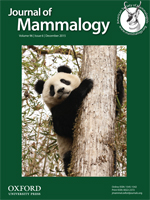Arvicoline rodents serve as model organisms for investigating the intricacies of ecological/evolutionary feedbacks that characterize multiannual fluctuations in abundance. A population of California voles (Microtus californicus) in central California was followed for 3.5 years using 4 small grids located 50 m apart. Blood samples were scored for 4 polymorphic allozyme loci by starch gel electrophoresis. These were carefully chosen for their potential to reveal details of genetic structuring among demes. A low density of voles developed into a peak followed by a rapid decline to low density. Heterozygosity averaged 20.2% (n = 709) with loci-specific shifts associated with density, season, and cyclic phase. Statistically significant heterogeneity in genotypic and allelic frequencies among the grids was found for 3 of the loci. Pairwise comparisons among the grids for each locus separately (n = 24) yielded 11 significantly disparate pairs for genotypic frequencies and 10 for alleles. Significant correlations with cyclic phase were found at 1 locus (leucine aminopeptidase). Spatial differentiation among grid pairs (FST) ranged up to a 12-fold difference. FST values stratified by cyclic phase showed the highest levels in the pre-high phase and the lowest in the postpeak. A “founder/flush” model with sequential phases of semi-isolated low-density demes followed by panmixia at high densities, and then a density crash is supported. This pattern is postulated to facilitate adaptive evolution.
BioOne.org will be down briefly for maintenance on 14 May 2025 between 18:00-22:00 Pacific Time US. We apologize for any inconvenience.
How to translate text using browser tools
1 December 2015
Genetic and Spatial Structuring of the California Vole (Microtus californicus) Through a Multiannual Density Peak and Decline
William Z. Lidicker
ACCESS THE FULL ARTICLE

Journal of Mammalogy
Vol. 96 • No. 6
December 2015
Vol. 96 • No. 6
December 2015
adaptive evolution
Allozyme
deme
demography
founder effects
FST
microevolution




